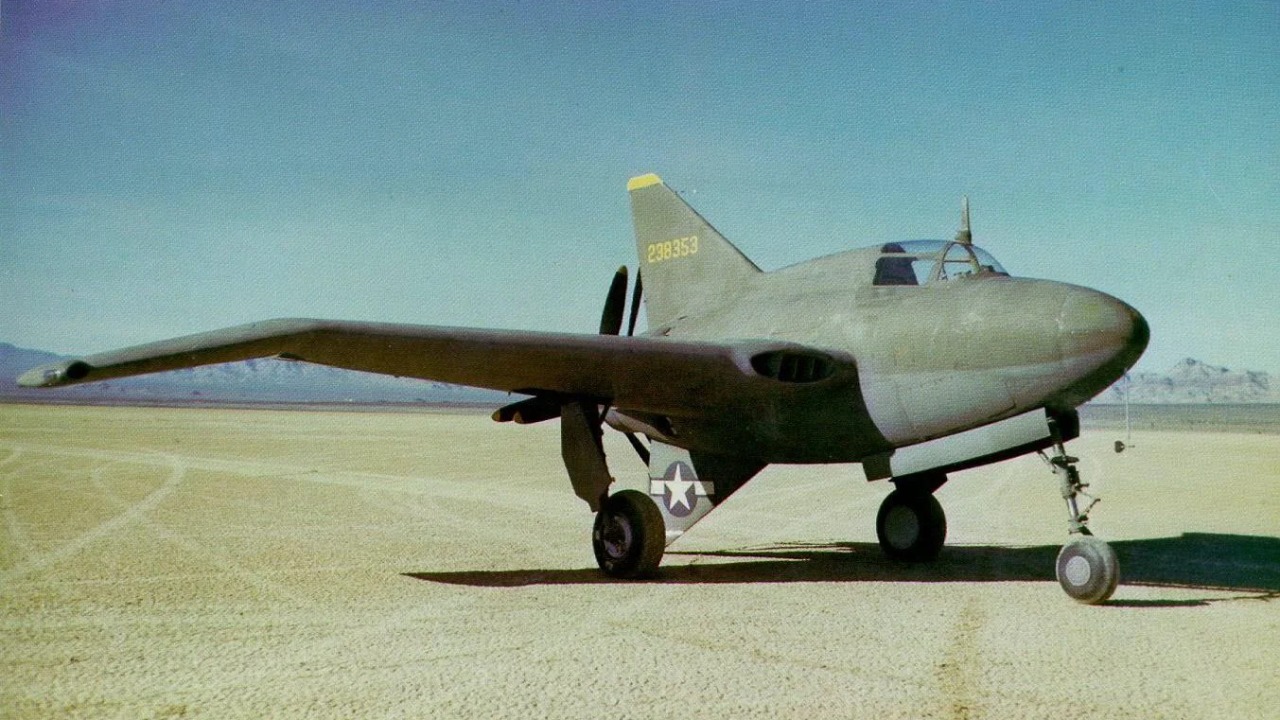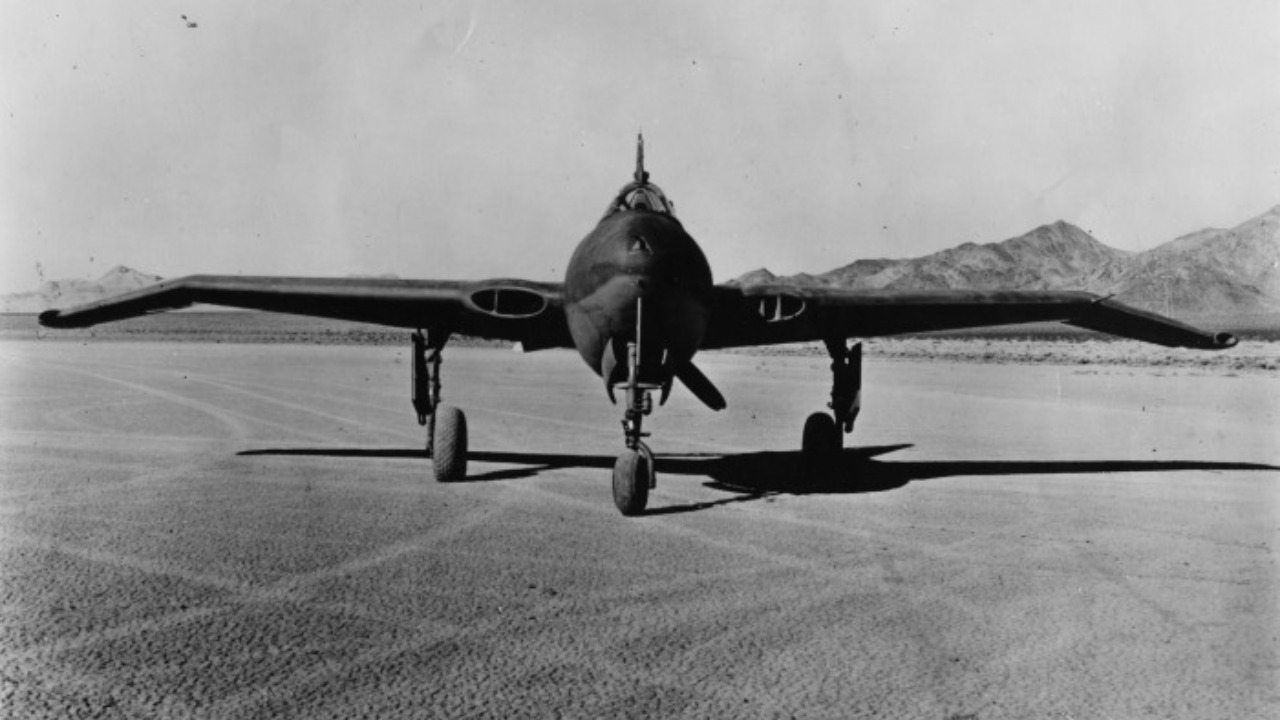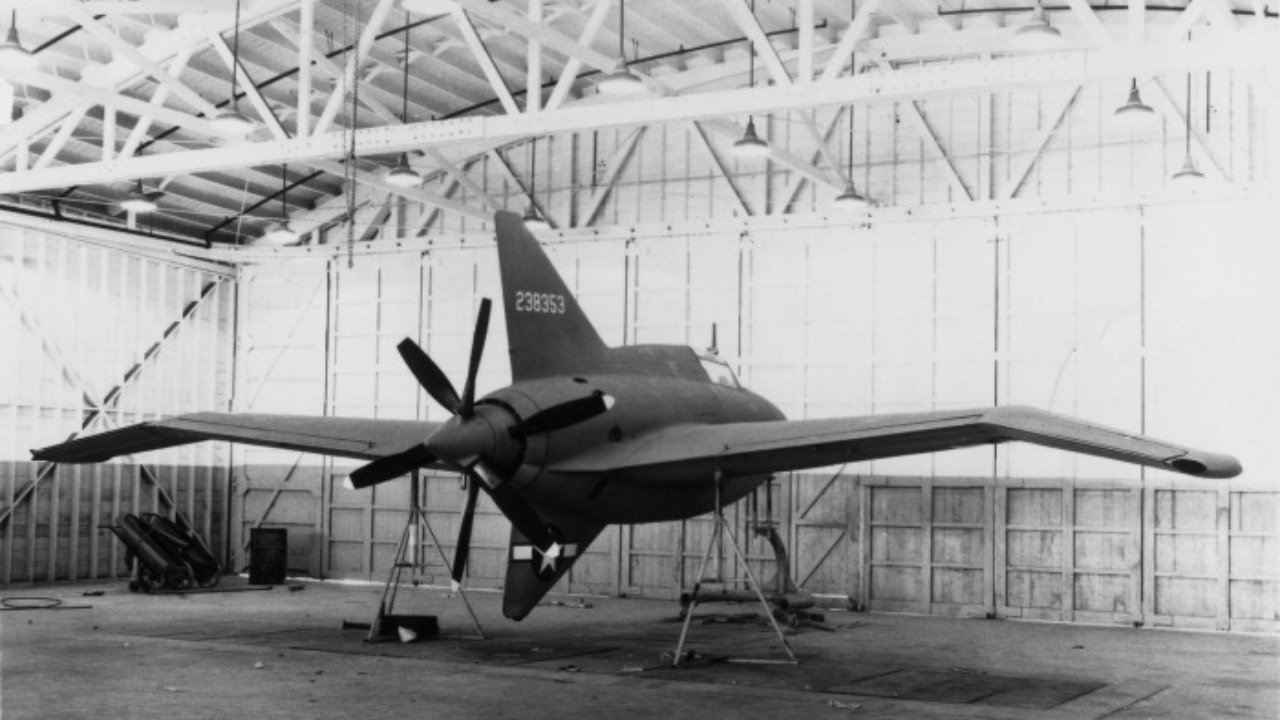
During World War II, the United States embarked on an ambitious journey to create a fighter plane that seemed plucked from the pages of science fiction. The Northrop XP-56 Black Bullet was a marvel of its time, boasting a radical design and innovative features that captivated both military minds and aviation enthusiasts. This futuristic aircraft symbolized the era’s relentless quest for technological advancement and superiority in aerial combat.
The Vision Behind the Black Bullet

The development of the XP-56 was driven by a pressing need for innovation in aerial warfare. As the world was engulfed in conflict, the United States sought to gain an edge over its adversaries through technological superiority. The aim was clear: create a fighter plane that could outperform existing models, offering enhanced speed, agility, and firepower. This was a time when aviation technology was advancing rapidly, and the XP-56 was envisioned as a game-changer in the skies.
At the heart of this bold vision was Jack Northrop, a renowned aircraft designer whose influence on the project was profound. Northrop was known for his forward-thinking approach to aviation design, and the XP-56 was a testament to his innovative spirit. Under his guidance, the project pushed the boundaries of conventional aircraft design, exploring new materials and construction techniques. One of the most notable aspects was the use of magnesium, a lightweight metal that promised to enhance the aircraft’s performance. This choice was not without its challenges, as magnesium’s flammability posed significant risks, but it underscored the project’s commitment to pioneering new ground.
Design and Technical Specifications

The XP-56’s design was nothing short of revolutionary. It featured a tailless configuration, a radical departure from traditional aircraft designs of the time. This choice was inspired by aerodynamic theories that suggested a tailless aircraft could offer reduced drag and increased speed. The sleek, futuristic appearance of the XP-56 seemed to defy the norms of aviation design, making it a subject of intrigue and speculation. Its unique shape was not just for show; it was a calculated decision aimed at achieving superior aerodynamic performance.
Powering the Black Bullet was a Pratt & Whitney R-2800 engine, a choice that promised impressive performance metrics. The expectations were high, with projections of remarkable speed and agility. However, the real-world results were less than stellar. The aircraft struggled with stability issues, and the engine did not deliver the anticipated power. Despite its promising design, the XP-56 faced significant challenges in translating its theoretical potential into practical performance.
In terms of armament, the XP-56 was envisioned to pack a formidable punch. The proposed weaponry included four .50 caliber machine guns, making it a potentially lethal adversary in dogfights. However, compared to contemporaries like the P-51 Mustang, the XP-56’s combat capabilities remained largely speculative, as it never progressed beyond the prototype stage.
Challenges and Shortcomings

The development of the XP-56 was fraught with engineering hurdles. Stability issues plagued the aircraft, stemming from its unconventional design. Balancing the aircraft’s center of gravity proved to be a persistent challenge, affecting its handling and performance. Moreover, the engine’s reliability was a constant concern, further complicating the development process. These technical problems underscored the difficulties inherent in pushing the envelope of aviation design.
The testing phases of the XP-56 were critical in assessing its viability. Test flights revealed several design flaws that needed addressing, and the aircraft’s performance fell short of expectations. Despite the lessons learned from these experimental sorties, the challenges proved insurmountable. The project faced mounting pressure as resources were diverted to more promising aircraft, ultimately leading to the XP-56 program’s abrupt cancellation. Contributing factors included the aircraft’s underwhelming performance, the high costs associated with its development, and the shifting priorities of wartime production.
Legacy and Impact on Future Aviation

Though the XP-56 never saw active combat, its influence on future aircraft designs is unmistakable. The innovative concepts explored during its development paved the way for advancements in aerodynamics and materials science. Lessons learned from the XP-56’s challenges informed subsequent projects, contributing to the evolution of modern aircraft. The Black Bullet’s legacy can be seen in later designs that successfully integrated similar principles but overcame the pitfalls encountered by the XP-56.
Historically, the XP-56 holds a unique place in WWII aviation history, representing the era’s technological aspirations. It serves as a reminder of the bold experimentation that characterized wartime innovation. While it may not have achieved operational success, the Black Bullet remains a symbol of the relentless pursuit of progress in the face of adversity. The wartime production efforts that fueled such projects underscore the broader context of industrial ingenuity during the conflict.
Today, the legacy of the Black Bullet lives on in museums and exhibitions, where surviving models capture the public’s imagination. These displays offer a glimpse into a fascinating chapter of aviation history, preserving the memory of the XP-56 for future generations. For those interested in seeing the Black Bullet up close, these exhibits provide a tangible connection to the past, allowing us to reflect on the ambitious vision that once propelled this remarkable aircraft. The Northrop XP-56 Black Bullet continues to captivate enthusiasts, ensuring its story remains a part of our shared heritage.